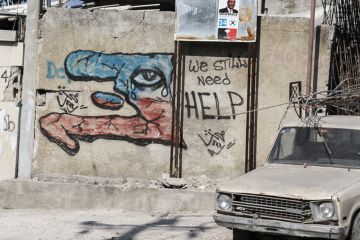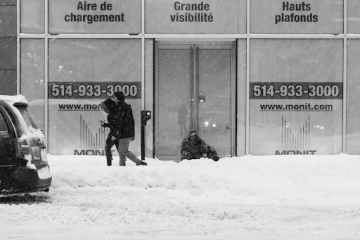Access to clean drinking water is not represented equally across Canada, with those living on Indigenous reservations being disproportionately affected by a lack of quality water infrastructure compared to the rest of Canada. Yet according to the United Nations, “The right to water entitles everyone to have access to sufficient, safe, acceptable, physically accessible and affordable water for personal and domestic use.”
Despite Canada being one of the most water-rich nations on the globe, many communities across Canada face long-term boil water advisories, and some of these advisories have persisted for decades. Though the Canadian government has pledged to end all long-term water advisories across Canada by March 2021, there are currently 57 long-term advisories in effect as of February 2021, a disproportionate amount of which are issued to Indigenous communities. While the current Canadian government has vowed to protect Indigenous rights, only short-term (and insufficient) emergency support has been offered, instead of long-term support to solve issues pertaining to clean water accessibility. The case of the Neskantaga First Nation offers an example of the lack of support from the Canadian government in confronting this long-standing water crisis.
Background on the Issue
Provincial regulations in Canada governing safe drinking water and sanitation do not extend to Indigenous reserves, as articulated in Article 6.49 of the 2009 Fall Report of the Auditor General of Canada. Tainted source water, and a lack of support for water system infrastructure and operators are just some of the issues faced on Indigenous reserves, as a direct result of government inaction. By 2018, the Canadian government had begun direct engagement with the Assembly of First Nations to attempt to repeal drinking water legislation passed in 2013. Ending long-term boil water advisories, which are issued when a harmful organism is found within drinking water and boiling water is required to make it fit for consumption, is a prominent part of this agenda.W While such efforts are often presented as great progress by the government, it is not necessarily the best measure for access to clean water on reserves, as it neglects the impacts of short-term advisories, lack of running water, or the impacts of climate change in relation to drinking water quality.
Consequently, many Indigenous communities have called for more concrete solutions to the problem, including requesting permanent changes to essential infrastructure and the creation of new infrastructure for water sanitation. A leading figure in Indigenous clean water advocacy is 16-year-old Chief Water Protector for the Anishnabek Nation Autumn Peltier. When addressing the United Nations in 2019, Peltier questioned, “All across these lands, we know somewhere where someone can’t drink the water. Why so many, and why have they gone without for so long?” Further delays to water infrastructure have been a by-product of the COVID-19 pandemic’s impacts on the construction sector. This is especially troubling during today’s pandemic, as Peltier remarked in a recent interview: “Because of COVID-19, [clean water is] more critical now than ever. This is probably the time the government needs to be acting on this even more effectively…”.
Analyzing the Neskantaga First Nation
The Neskantaga First Nation is currently undergoing the longest continuous boil-water advisory in Canadian history. This case has made clear the extent to which Indigenous communities disproportionately face barriers to clean water, due to the Canadian federal government’s ineptitude in implementing effective long-term solutions ensuring access to clean water.
The Neskantaga have been under a boil-water advisory for 25 years, and many community members have never been able to drink water directly from a tap. This is mainly due to the inadequacies of the Neskantaga water distribution system, which has been marked by consistent technical and operational deficiencies throughout the long-term advisory. In 2016, the Neskantaga was promised upgrades to their water plant by then-Minister of Indigenous Affairs Carolyn Bennett, but the project has consistently met delays and installation issues. Another relevant barrier is the issue of ensuring the water treatment centre is allocated a highly trained operator to run the advanced system when it is finally constructed and operational, which is difficult given that the operator in charge of the complex system requires the same level of training as operators in major cities like Toronto or Vancouver. Jamie Saunders, an infrastructure adviser at Nishnawbe Aski Nation, similarly points out the flaws in the federal government’s approach to installing technical equipment without allocating funding or resources for the operation and maintenance of the water treatment plants. The complexity of this task demonstrates that the federal government’s proposed solutions for the Indigenous water crisis is disjointed in many ways, and lacks consideration for how the deployment of this technical infrastructure will play out on the ground.
The long-term issue came to a head in the midst of the coronavirus pandemic, when 250 members of the Neskantaga were evacuated from their homes in northwestern Ontario due to an oily sheen found in their water reservoir Community members had no choice but to relocate at a hotel more than 400 kilometres away from their community. During the incident, Peter Moonias, a 75-year-old former chief of Neskantaga First Nation stated, “Even here in Thunder Bay, I cannot take a drink from tap water because I’m so used to being afraid to drink from the tap water in my house.” Even after the Neskantaga community members were allowed to return home in late December 2020, they returned to the same boil-water advisory they left with. A 14-day performance test of the Neskantaga water plant by ALS Laboratories in Thunder Bay revealed that levels of chlorine residuals in the distribution system were below standard, which means that the water is inadequately protected from viruses, harmful bacteria, and other forms of contamination.
Frustrations have been mounting amongst the Neskantaga for 25 years in response to government neglect. As indicated by former Chief Moonias, “When we complain about the water, [the Canadian government] tell us it’s not a health and safety issue…” In response to their continued lack of support and recognition from the federal government, Neskantaga youth have become engaged in advocacy and protest on behalf of their community, as evidenced by a recent protest they led in Thunder Bay. Bedahbun ‘Bee’ Moonias and Jayla Troutlake, both nine years old, were featured in the media during the December 2020 evacuation, telling reporters they missed their homes and their pets, and just wanted to safely return home. The two youths have become the faces of the Neskantaga displacement, with Bee telling the CBC that, “we feel like we don’t exist.” Overall, the Neskantaga are representative of a much larger systemic issue within Canada. Other Indigenous nations facing similar conditions include the Gull Bay (Kiashke Zaaging Anishinaabek) Nation (boil water advisory set in 2009), the Mississaugas of Scugog Island First Nation (boil water advisory set in 2008), and the Muskrat Dam Lake Nation (boil water advisory set in 2003), among many others.
Moving Forward
What can be done to mandate clean water accessibility for all communities in Canada? According to Lalita Bharadwa, a toxicologist who specializes in human-health risk assessment in rural populations, “top-down” solutions will never truly be able to fix the issue. She believes that individual consultations are necessary to ensure that solutions are tailored to each community’s specific needs. Each community’s geographic location and population needs to be accounted for in the creation of potential solutions to clean water accessibility. The Canadian government needs to dedicate the appropriate resources to make “bottom-up” solutions possible. Otherwise, Indigenous communities in Canada will continue to endure the systemic racism characterizing Canada’s water crisis.
“Recycling Water Bottles” by Mr.TinDC is licensed under CC BY-ND 2.0




